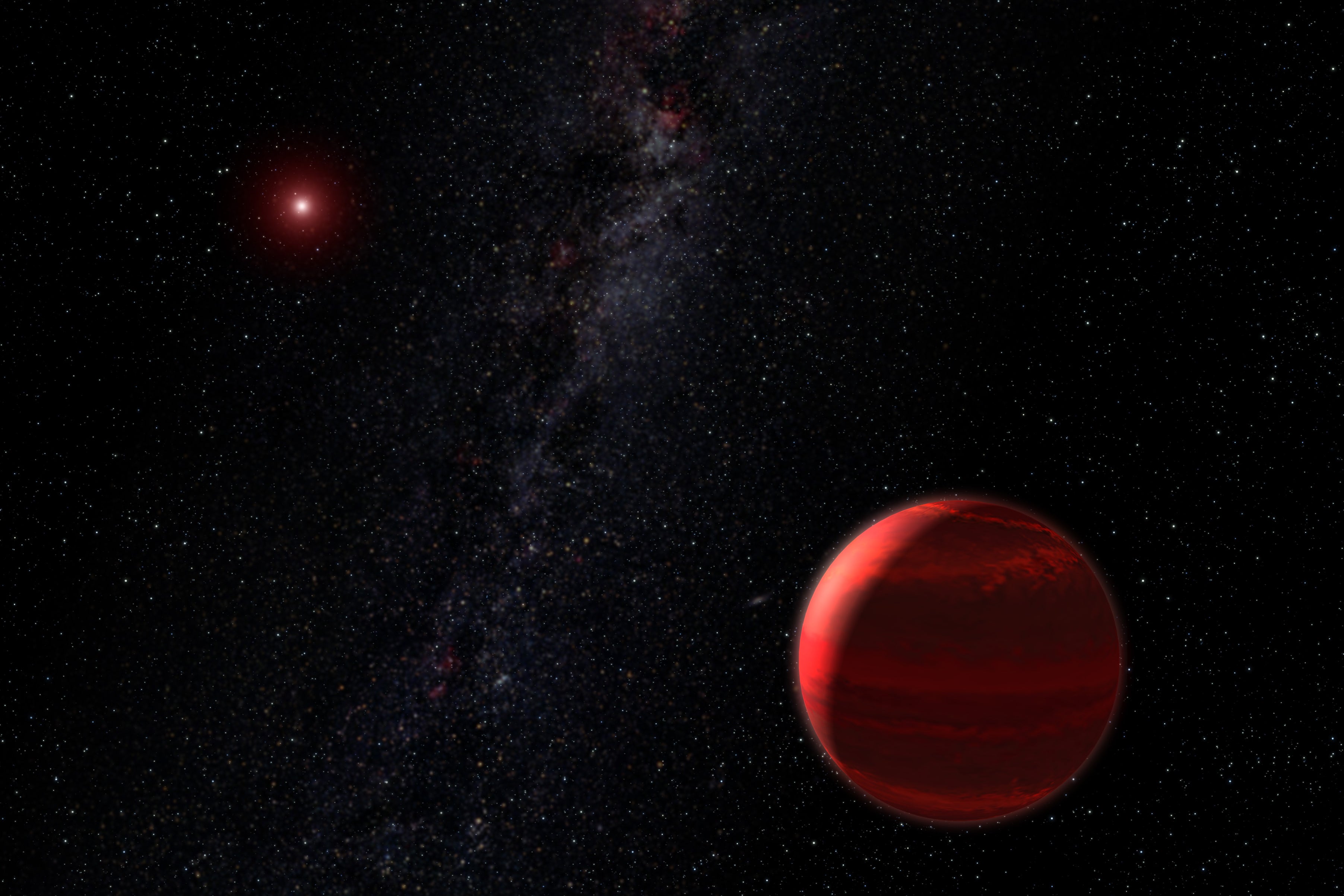
When I was younger, I gazed at the stars at night and wondered how many possessed planets like Earth. Being a Star Trek nerd, I couldn’t help but imagine a universe where stars were fecund and planets were everywhere. But not knowing was agony.
This story has a happy ending, though: Now we do know—the galaxy is filled with planets.
Even better, this story also comes with a twist worthy of an eyebrow-raise from Mr. Spock (accompanied by a flatly intoned “Fascinating”): most planets orbiting distant stars—what we call exoplanets—do not circle around ones like the sun. Instead, the vast majority revolve around red dwarfs, diminutive cousins of our own star that are by far the most common stellar denizens of the Milky Way.
If and when we ever find life out there in the universe, odds are those aliens will look up to see (or feel or sense or whatever) a red sun in their sky, not a yellow-white one.
I do love Star Trek, but—given that the Man of Steel was born under a red sun—it looks like Superman got this one right.
Astronomers discovered the first-known exoplanets in the early 1990s (that’s actually a really good story, and I encourage you to find out more about it), ones often called “pulsar planets.” But those worlds orbit a dead star and are lethally zapped by high-energy radiation to boot. For those of us hoping to find more clement Earth-like worlds, that wasn’t very satisfying.
Then planets were found around stars more like our own, “normal” ones stably fusing hydrogen into helium in their cores. But again, nature threw us a curveball: these planets were gas giants—bloated worlds composed mostly of gas, like Jupiter and Saturn, with no solid surface to speak of—orbiting so close in to their stars that they’re cooked to temperatures of well over a thousand degrees. We call these “Hot Jupiters,” and although they qualify as planets under anyone’s definition, they’re about as un-Earth-like as planets can be.
Eventually, astronomers spotted planets orbiting farther out from their stars, at the right distance and receiving the right amount of light and heat to potentially possess bodies of liquid water on their surfaces—if they had surfaces. Indeed, some of these just-right planets were smaller than typical Jovian gas giants and could possibly be rocky worlds like Earth. With current techniques we can’t know much more about them than their size and mass, but that can be used to find their density, which is important. Iron is much denser than rock, which is denser than water and air. So knowing a planet’s overall density can tell you in principle if it’s more like Earth or Jupiter. Handy.
As time went on more planets like that were found, and statistics were updated. For example, in 2013 it looked like as many as one in six stars had an Earth-sized planet. Many of these worlds would be too hot for life as we know it, but that number was skewed because of the way planets were discovered; ones close in to their stars are easier to find. As observational and analysis techniques improved, astronomers uncovered cooler planets as well, but even today these are still difficult to detect.
And until recently, astronomers were missing another important piece of the planetary puzzle: red dwarfs. These featherweight stars range up to about half the mass of the sun. They’re smaller, cooler and much fainter than the sun as well; some shine less than 1 percent as brightly. Replace the sun with a red dwarf of that size, and Earth would freeze as solid as Pluto.
These characteristics make them hard to study. They’re dim. The closest star to the sun in the entire universe, Proxima Centauri, is a fairly typical red dwarf, but it’s so faint you need a decent telescope to see it at all (and it’s known to host at least two planets).
But don’t confuse their feeble nature with a lack of stature; they’re the most common kind of star in the galaxy, outnumbering all other stars by more than two to one. By comparison the sun is a rare behemoth, in the top 20 percent of stars by mass.
In 2008 the MEarth project (pronounced “mirth,” because astronomers can be whimsical sometimes) started up, studying 1,200 red dwarfs with small telescopes to look for telltale signs of planets. In 2009 MEarth found its first exoplanet: GJ1214b, a super-Earth—a planet bigger than Earth but smaller than Neptune—orbiting the nearby red dwarf GJ1214, about 47 light-years from Earth.
Since then many more Earth-ish exoplanets orbiting red dwarfs have been found. And in February 2023 astronomers published a new study in the journal Astronomy and Astrophysics that looked specifically at red dwarfs very close to the sun; they observed three fourths of all faint red dwarfs within about 30 light-years of us, nearly 350 such stars. Thirty-three new planets were found, and dozens of previously discovered ones were detected as well.
As an example, one planet in particular discovered in the new survey is called Wolf 1069b. It orbits a very small red dwarf, just one sixth the mass of the sun. The planet is likely about the same size as Earth, and a little more massive. That’s encouraging.
Even better, it orbits the star at a distance of about 10 million kilometers. That’s close—one fifteenth the distance of Earth from the Sun—but remember, we’re talking red dwarf here, and a particularly dinky one. The star is only about 2 percent as luminous as the sun, so the planet gets enough heat to warm it to about negative 20 degrees Celsius. Chilly, sure, but mind you that’s if it doesn’t have an atmosphere. Without air Earth would be about the same temperature! But our atmosphere traps heat, keeping water liquid over most of the surface. The same could be true for Wolf 1069b. We just don’t know.
The planet is only a little over 30 light-years from us, implying Earth-sized planets around extremely small red dwarfs are common; the galaxy is 120,000 light-years across, so if planets like this were rare you wouldn’t expect to find one so close.
And this leads to the more general—and, in my opinion, more awe-inspiring—result of the survey: looking at so many stars, they found that the average number of planets per star in their sample is about 1.4, and that roughly 94 percent of the stars have planets. In other words, nearly all red dwarfs have planets, and the ones that do tend to have more than one planet orbiting them.
This was known in general for all stars before the survey—after all, the sun has eight planets in tow—but the new work extends that knowledge more firmly to a much lower stellar mass range using nearby red dwarfs, stars that were too faint to easily observe previously. And, because of their ubiquity, this means red dwarfs likely host more planets than all other kinds of stars in the galaxy combined! Impressive, especially for such dim bulbs.
We’re a long way from warp drive, but we’re already compiling an impressive list of potential destinations for boldly going on future voyages. And we keep getting better not just at finding these planets but finding out more about them. Do they have atmospheres? Oxygen? Water?
At the moment, we don’t know. But we’ll keep boldly seeking out these strange, new worlds until we do.
This is an opinion and analysis article, and the views expressed by the author or authors are not necessarily those of Scientific American.



